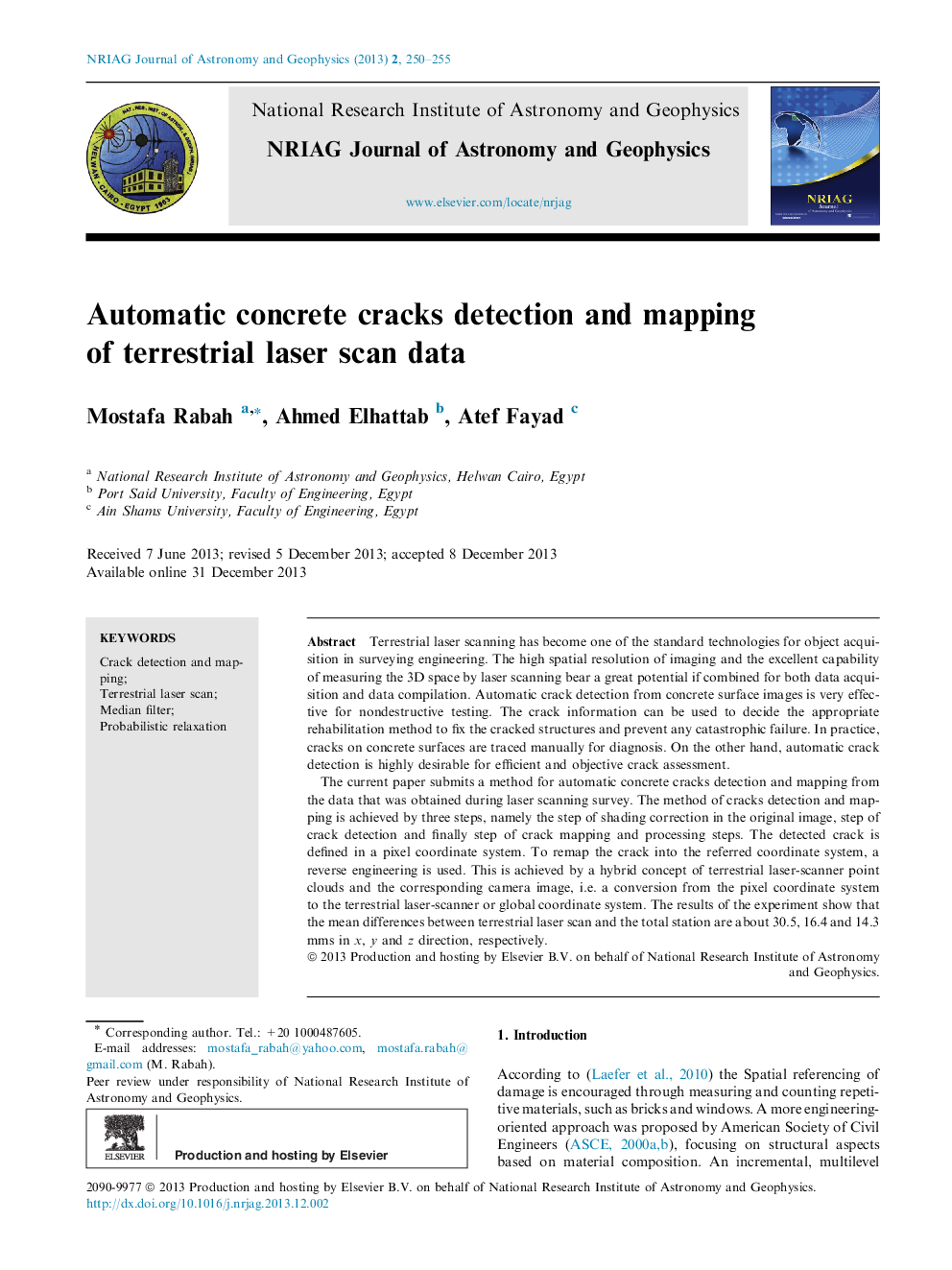| Article ID | Journal | Published Year | Pages | File Type |
|---|---|---|---|---|
| 1780704 | NRIAG Journal of Astronomy and Geophysics | 2013 | 6 Pages |
Terrestrial laser scanning has become one of the standard technologies for object acquisition in surveying engineering. The high spatial resolution of imaging and the excellent capability of measuring the 3D space by laser scanning bear a great potential if combined for both data acquisition and data compilation. Automatic crack detection from concrete surface images is very effective for nondestructive testing. The crack information can be used to decide the appropriate rehabilitation method to fix the cracked structures and prevent any catastrophic failure. In practice, cracks on concrete surfaces are traced manually for diagnosis. On the other hand, automatic crack detection is highly desirable for efficient and objective crack assessment.The current paper submits a method for automatic concrete cracks detection and mapping from the data that was obtained during laser scanning survey. The method of cracks detection and mapping is achieved by three steps, namely the step of shading correction in the original image, step of crack detection and finally step of crack mapping and processing steps. The detected crack is defined in a pixel coordinate system. To remap the crack into the referred coordinate system, a reverse engineering is used. This is achieved by a hybrid concept of terrestrial laser-scanner point clouds and the corresponding camera image, i.e. a conversion from the pixel coordinate system to the terrestrial laser-scanner or global coordinate system. The results of the experiment show that the mean differences between terrestrial laser scan and the total station are about 30.5, 16.4 and 14.3 mms in x, y and z direction, respectively.
